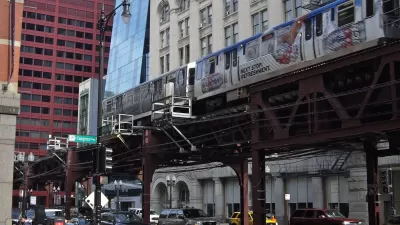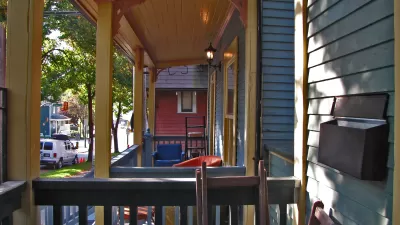After 22 years in office, Chicago Mayor Richard M. Daley is leaving office. This piece looks back on his mixed impact on the urban design of the city.
Chicago Tribune architecture critic Blair Kamin reflects on Daley's tenure and the good and bad projects he ushered.
"Daley had longevity and he had luck. His record-setting 22 years in office, one more than his father, allowed him to experiment and to coalesce the power that led to dramatic changes to the cityscape. Like his father, he had the good fortune to govern during good economic times. He rode that wave to strengthen the city's downtown, improve the city's infrastructure and make Chicago work.
But it did not work for everyone.
The city actually lost population during the last decade, the only one of America's 10 largest cities to do so. While Chicago's burnished downtown confirms its status as a world city, other parts of the city are little different from the urban nightmare of Detroit. The blooming tulips on North Michigan Avenue have not stanched the bleeding of people in Englewood, a South Side neighborhood that lost more than 9,500 people (a quarter of its population) in the past ten years."
FULL STORY: Judging Daley's record on architecture and urban design: A great, but flawed, shaper of Chicago's cityscape

Maui's Vacation Rental Debate Turns Ugly
Verbal attacks, misinformation campaigns and fistfights plague a high-stakes debate to convert thousands of vacation rentals into long-term housing.

Planetizen Federal Action Tracker
A weekly monitor of how Trump’s orders and actions are impacting planners and planning in America.

Chicago’s Ghost Rails
Just beneath the surface of the modern city lie the remnants of its expansive early 20th-century streetcar system.

Bend, Oregon Zoning Reforms Prioritize Small-Scale Housing
The city altered its zoning code to allow multi-family housing and eliminated parking mandates citywide.

Amtrak Cutting Jobs, Funding to High-Speed Rail
The agency plans to cut 10 percent of its workforce and has confirmed it will not fund new high-speed rail projects.

LA Denies Basic Services to Unhoused Residents
The city has repeatedly failed to respond to requests for trash pickup at encampment sites, and eliminated a program that provided mobile showers and toilets.
Urban Design for Planners 1: Software Tools
This six-course series explores essential urban design concepts using open source software and equips planners with the tools they need to participate fully in the urban design process.
Planning for Universal Design
Learn the tools for implementing Universal Design in planning regulations.
planning NEXT
Appalachian Highlands Housing Partners
Mpact (founded as Rail~Volution)
City of Camden Redevelopment Agency
City of Astoria
City of Portland
City of Laramie




























